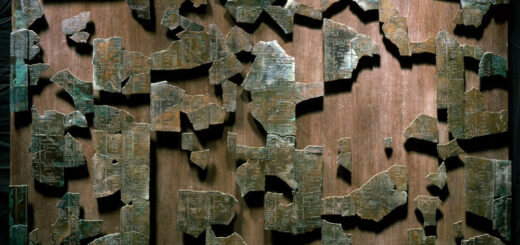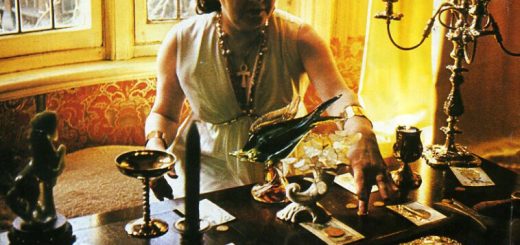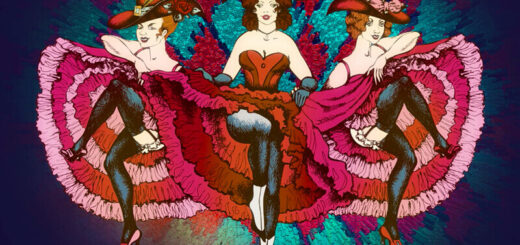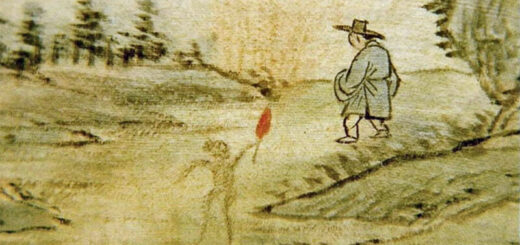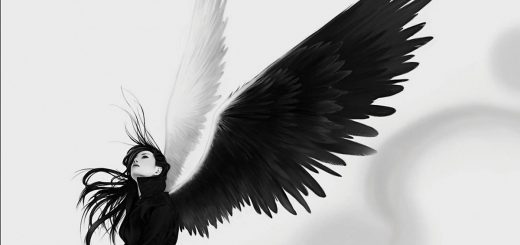Banshee
A banshee, banshie or bean si is a supernatural female creature of Irish Celtic mythology, considered a magician or messenger of the Other World (sidh). It is comparable to other mythological creatures in Europe (Welsh or Nordic mythology) like the French Dames blanches and Witte wieven in the Netherlands. Many Irish families have their “family-banshee” who heralds the death of a family member, usually by wailing, shrieking, or keening. The cry of the banshee is clearly distinguishable from a human or animal cry, and it is always heard at night. It is heard in the evening by those who are still awake, or it wakes people up during their sleep.
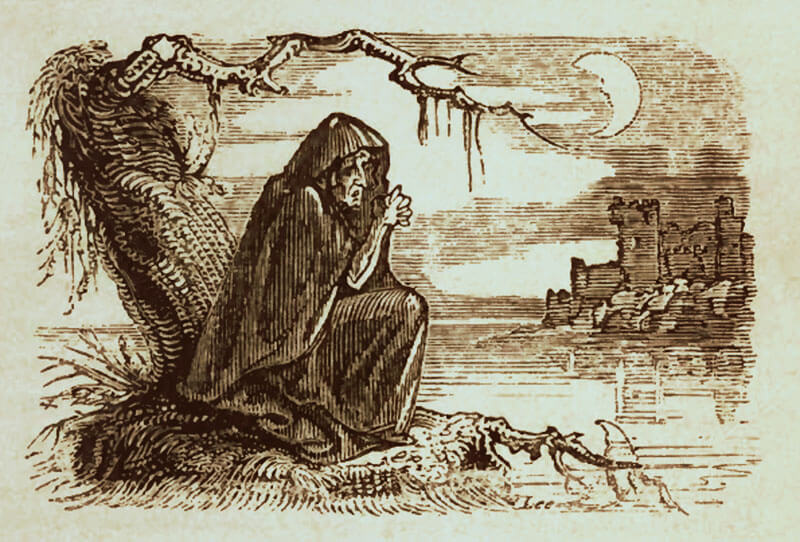
Bunworth Banshee, Fairy Legends and Traditions of the South of Ireland. 1825.
The apperition is known by different names. The most common current designation is of course the English term banshee, which by the way, was first used in 1771, phonetically derived and borrowed from Irish Gaelic. In Ireland, the term bean sidhe, bean sí, formerly ben síd) or baintsíde is used. In Scottish Gaelic she is called bean sith, literally meaning “woman of the sidh“, the sidh (or sí, síd, sith, sidhe) being the Other World in the Gaelic mythology. Later this term took the meaning of a “hill or mound” which gives access to the kingdom of the gods, fairies and death. This finally lead to the translation of the banshee as “woman of the fairy mound” or “fairy woman“).
It is however difficult to determine the original meaning of bean sí, because of the mixture of pagan and Christian concepts in medieval texts. In the past, bean could have meant a “mystical or magical quality” (sí) attached to a “woman” (bean). It would only be from the eighth century onwards that the bean would take on the meaning of “woman of the Other World” in the texts.
Bean sídhe and Bean chaointe
According to tradition, the banshee sometimes announces death by crying, moaning or lamentation; or more precisely “funeral melodies”. By this behaviour, she is thus called in Irish bean chaointe, in Scottish caointeach and keening woman in English.
These “keening” melodies refer directly to the ancient Gaelic practice of weeping women; women who improvised vocal lamentations during funeral processions and burials, in order to pay tribute to the dead and their families. This funeral practice, present in many parts of the world, was documented in Ireland and Scotland during the Middle Ages. It has gradually disappeared, following the prohibition of this practice by the Catholic Church in Ireland8. These weeping women (sometimes paid) generally imitated the aspects of the legendary banshee, wearing, for example, their hair untied, a long dress, bare feet.
According to folklorist Shane Broderick the keen or lament was a central component in the rituals concerning death and from almost all the accounts passed down we can see that it was primarily a female role. The accounts of women performing laments far outweigh the number concerning men, in fact there are very few at all concerning men. The lamenting of the women had the function of a psychopomp, thus leading or pushing the soul of the deceased into the Otherworld.
He also distinguishes between the bean sídhe and the bean chaointe: “We can safely say from looking at the evidence that the transition of the soul/ spirit is in the hands of a human female agent but interestingly a female otherworld equivalent, the ‘banshee’, can be found in accounts throughout the country also. As the “” can be said to “sing” death into the community, the “bean sídhe” is seen to “sing” it out’ (Ó Crualaoich). There are a number of striking resemblances between the two that that back this theory up. We are told that the “gol” or cry was the most important constituent of the keen (Ó Madagáin,2006:84) and this bears striking resemblance to descriptions of the singular cry of the banshee.”
In southeastern Ireland, the banshee is also referred to by different dialectal forms of badhbh; this term derives from Badh (formerly Bodhb), the name of a protective (or warrior) goddess in Celtic or medieval mythology.
It is difficult to determine the original meaning of bean sí, because of the mixture of pagan and Christian concepts in medieval texts. In the past, bean could have meant a “mystical or magical quality” (sí) attached to a “woman” (bean). It would only be from the eighth century onwards that the bean would take on the meaning of “woman of the Other World” in the texts.
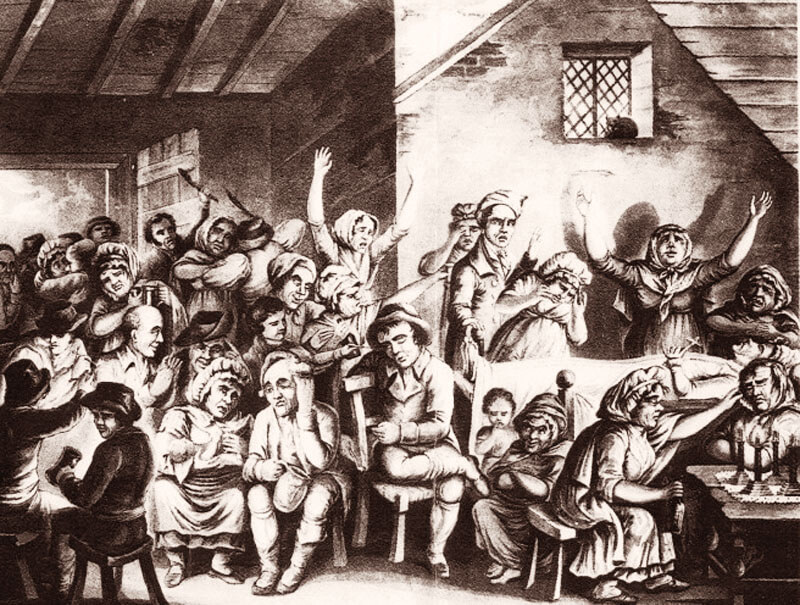
Lamenting Irish women
The appearances of the banshee
The descriptions of banshees sighted in Ireland vary. There are some features that are common to all Banshees. There is always only one banshee, which is assigned to an autochthonous family. She is usually represented as a deadly pale woman dressed in white with long whitish or black hair. Her eyes are often glowing red from constant crying. In most descriptions she is an old woman, rarely young and beautiful. Sometimes she has long streaming hair and wears a grey cloak over a green dress.
She may be dressed in white with red hair and a ghastly complexion, according to a firsthand account by Ann, Lady Fanshawe in her Memoirs. Lady Wilde in Ancient Legends of Ireland provides another:
“The size of the banshee is another physical feature that differs between regional accounts. Though some accounts of her standing unnaturally tall are recorded, the majority of tales that describe her height state the banshee’s stature as short, anywhere between one foot and four feet. Her exceptional shortness often goes alongside the description of her as an old woman, though it may also be intended to emphasize her state as a fairy creature.”
Sometimes the banshee assumes the form of some sweet singing virgin of the family who died young, and has been given the mission by the invisible powers to become the harbinger of coming doom to her mortal kindred. Or she may be seen at night as a shrouded woman, crouched beneath the trees, lamenting with veiled face, or flying past in the moonlight, crying bitterly. And the cry of this spirit is mournful beyond all other sounds on earth, and betokens certain death to some member of the family whenever it is heard in the silence of the night.
The banshee is heard more often than seen: She usually sits in front of the family window a few days before the death of a family member and cries (banshee wail). The banshee preferably appears at the ancestral home of the long-established Irish family to which it has joined, even if the family member to whom the lament is directed lives abroad. It is often seen or heard at the edge of paths or waters. The person whose death the Banshee announces does not hear her lamentation herself. Allegedly, every autochthonous family in Ireland has its own banshee. The banshee would even follow the family if it moved to another country.

Ängsälvor (meadow elves) 1850 by Swedish painter Nils Jakob Olsson Blommér (1816 – 1853)
Scotland
In Scottish popular belief – especially in the western highlands – the bean-nighe or nigheag na h-àth (the “washerwoman at the ford”) is the counterpart to the Irish banshee: unlike the latter, however, she does not complain under a window, but is found in nature washing shrouds. The bean-nighe is said to have sagging breasts, a single nostril and protruding teeth, which makes her appear extremely ugly.
A more feared female creature is the baobhan sith. The baobhan sith are female vampires in the folklore of the Scottish Highlands, though they also share certain characteristics in common with both the banshee, the succubus / incubus and fairy. They appear as beautiful women who seduce their victims before attacking them and draining their blood. According to the Scottish folklorist Donald Alexander Mackenzie (Scottish Folklore and Folk Life. Blackie & Son 1935), the baobhan sith usually appears as a beautiful young woman wearing a long green dress that conceals the deer hooves she has instead of feet. Like other vampires she drinks the blood of human victims and will vanish with the rising sun. She may also take the form of a hooded crow or raven.
Just like there are many stories about banshees there are numerous stories about the baobhan sith with a general theme of hunters being attacked in the wilderness at night. One recurring motif in these stories is that the baobhan sith appears almost immediately after the hunters express their desire for female companionship. This is connected with a traditional Scottish belief that if one were to make a wish at night without also invoking God’s protection, then that wish would be granted in some terrible manner.
Gaelic mythology
Sometimes banshees or banshee-like fairies grant their favours to men, if they are worthy of it, that is to say to heroes or skilled warriors, such as Conle or Bran Mac Febail, and take them with them to the “Plain of Pleasures”, Mag Meld, another name of the Sidh. Sometimes their appearance causes a disease that no medicine can cure, and which leads to death, unless divine intervention.
The superficially Christianized account of the death of Muirchertach Mac Erca (Aided Muir-chertaig Meic Erca) presents us with a bansidh and its powers. In this story, the hero is not taken into the sidh, but the woman exercises in the world before converting. Sin, the woman of the Other World, is so beautiful that the king cannot resist seduction and demands that he repudiate and drive out his wife. He is forbidden to pronounce the woman’s name (geis), under penalty of death. Its magic is such that it can create armies, change water into wine, transform stones into sheep and ferns into pigs, it can also make gold and silver.
Folklore and related female apparitions
The banshee-folklore concerns all legends and popular beliefs of the British Isles (Ireland and Great Britain). These legends were passed down from generation to generation, mainly by oral means (stories, tales, songs, rites). The banshee remained an object of belief from the Middle Ages until the beginning of the 20th century when legends and folk tales were collected by researchers. Banshee-like apparitions are however not restricted to Ireland and the British Isles.
In Dutch mythology and legends, the Witte Wieven (also known as Wittewijven) are spirits of “wise women” (or else elven beings). The mythology dates back at least to the pre-Christian era (7th century) and was known in the present-day regions of the Netherlands, Belgium and parts of France. In some places they were known as Juffers or Joffers (“ladies”), or as Dames Blanches (White Ladies) in French.
sources:
irishfolklore.wordpress.com/tag/bean-ghluine/
Scottish Folklore and Folk Life. Blackie & Son 1935 – Donald Alexander Mackenzie
several wikipedia.org-sources
You may also like to read:
The Mystery of the White Ladies
Animal ghosts and apparitions
Historical werewolf cases in Europe
Thought forms – Thoughts condensed on purpose or by accident
Poltergeist
Mountain spirits
Allan Kardec: Life after death as a science…
Black cat superstitions
The real vampire in Russia and Slavonic countries


